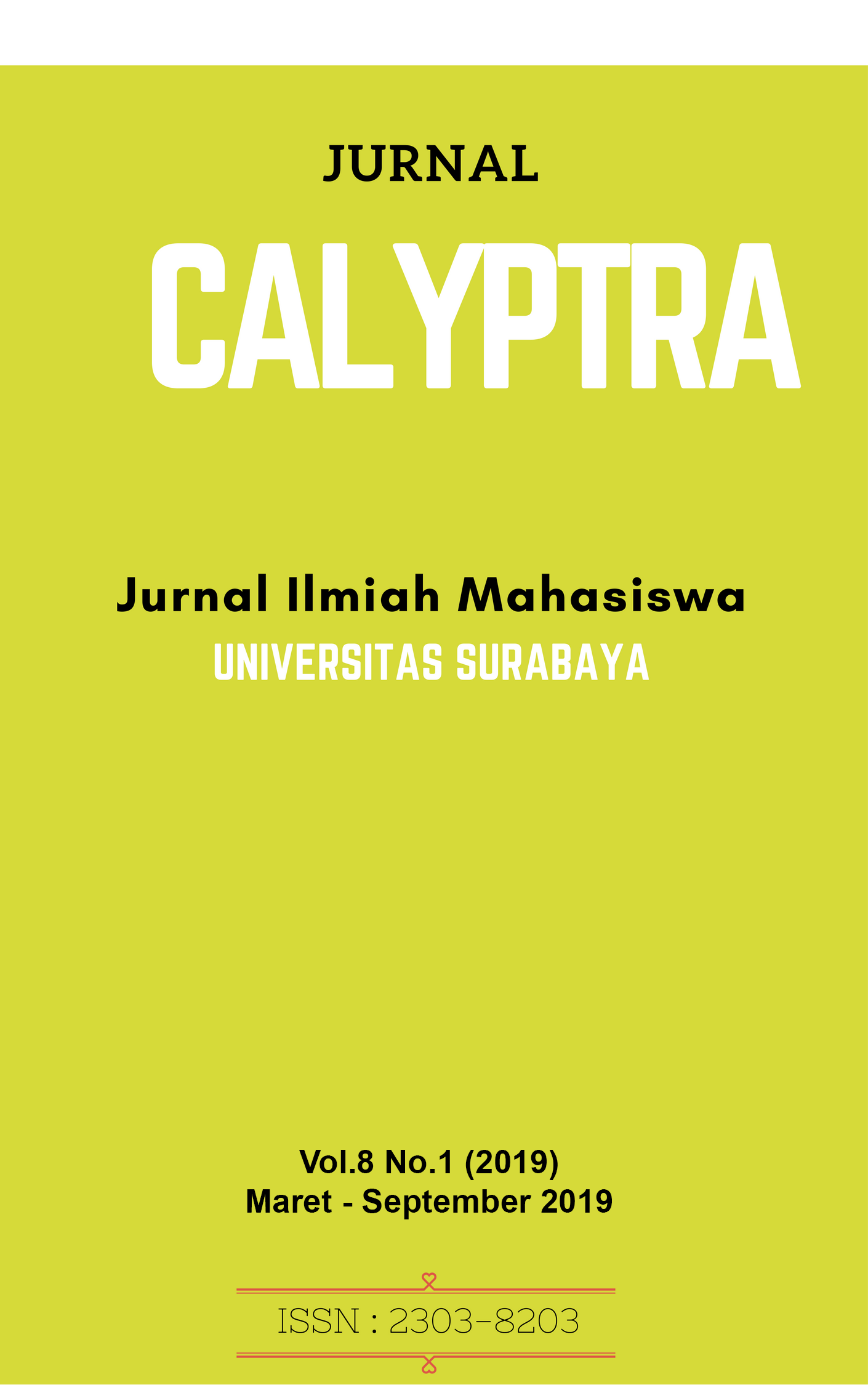KEMAMPUAN ISOLAT JAMUR ASPERGILLUS NIGER SEBAGAI AGEN BIOREMEDIASI DALAM DEKOLORISASI SENYAWA PEWARNA REACTIVE RED DAN DIRECT TURKISH BLUE
 Abstract Views:
1108 times
Abstract Views:
1108 times
 PDF - FULL TEXT Downloads:
3637 times
PDF - FULL TEXT Downloads:
3637 times
Abstract
Abstrak - Penelitian ini tentang biodegradasi pewarna reactive red dan direct turkish blue oleh isolat jamur Aspergillus niger dengan tujuan untuk mengetahui kemampuan jamur dalam mendegradasi pewarna reactive red. Biodekolorisasi pewarna dilakukan pada media potato dextrose broth (PDB). Aspergillus niger mampu mendekolorisasi pewarna pada konsentrasi 50 ppm sebesar 76,4% setelah diinkubasi selama 3 hari untuk pewarna reactive red. Sedangkan untuk pewarna direct turkish blue pada konsentrasi 50 ppm dengan masa inkubasi 4 hari mampu mendekolorisasi sebesar 50%. Penelitian mengindikasikan bahwa Aspergillus niger dapat digunakan untuk mendegradasi senyawa pewarna tekstil reactive red dan direct turkish blue.
Kata kunci: Aspergillus niger, Dekolorisasi, Reactive Red, Direct Turkish Blue
Abstract - The biodegradation of reactive red dye and direct turkish blue dye by fungus Aspergillus niger was investigated. Biodecolorization of dye was conducted on potato dextrose broth (PDB) medium. Aspergillus niger degraded dye by 76,4%, after incubated for 3 days for reactive red respectively. And then, for direct turkish blue dye, Aspergillus niger can degrade dye 50% decolorization after incubated for 4 days. This study indicated that Aspergillus niger can be used to degrade reactive red and direct turkish blue.
Keywords: Aspergillus niger, Decolorization, Reactive Red, Direct Turkish Blue
Downloads
References
Ali N, Hameed Abdul, Faisal Siddiqui Muhammad, Bux Ghumro Pir, Ahmed Safia. (2009). Application of Aspergillus niger SA1 for the Enhanced Bioremoval of Azo Dyes in Simultated Textile Effluent. African Journal of Biotechnology Vol. 8 (16), pp. 3839-3845.
Ali NF, Mohamedy RSR. (2012). Microbial decolourisation of textil waste water. J Saudi Chem Soc: 117-115.
Amadi, O. C dan Moneke, A. N. (2012). Use of Starch Containing Tubers For The Formulation of Culture Media for Fungal Cultivation. African Journal of Microbiology Research, 6(21), 4527-4532.
Bergsten Torralba LR, Nishikawa MM, Baptista DF, Magalhaes DP, Da Silva M. (2009). Decolorization of diferent textile dyes by Penicillium simplicissimum and toxicity evaluation after fungal treatment. Braz J Microbiol 40:808–817
Chang, N. B., Chen, H. W., Ning, S. K. (2001). Identification of river water quality using the Fuzzy Syinthetic Evaluation approach. Journal of Enviromental Management 63: 293- 305.
Fu Y. and Viraraghavan T. (2001). Fungal decolorization of dye wastewaters: a review. Bioresour Technol Journal., 79, 251–262
Guswandi, J. Panjaitan, S. Suhardi, W. Niloperbowo, T. Setiadi. (2007). Penghilangan Warna Limbah Tekstil Dengan Marasmius Sp. Dalam Bioreaktor Unggun tetap Termodifikasi (Modified Packed Bed). Fakultas Teknik, ITB: Bandung.
Hattaka A. (1994). Lignin Modifying Enzyme From Selected White-Rot Fungi: Production Dan Role In Lignin Degdradation. FEMS Microbial, Volume 13 (125-135).
Husseiny Sh. M. (2008). Biodegradation of the Reactive and Direct Dyes Using Egyptian Isolates. Journal of Applied Sciences Research, 4(6): 599-606.
Khan R, Bhawana P, Fulekar MH. (2013). Microbial decolorization and degradation of synthetic dyes: a review. Rev Environ Sci Biotechnol 12:75–97
Murugesan K. (2002). Studies on production, purification, characterization and crystallization of laccase from a white rot fungus Pleurotus sajor-caju and its application in bioremediation of textile dye effluent and dye contaminated soils. Thesis Madras University.
Parvez, Rizwana and Maheswari, Uwa. (2015). Decolourization of Reactive azo dyes by Aspergillus niger from dying industry effluent. International Journal of Scientific & Engineering Research, Volume 6, Issue 2.
Primack, R.B., J. Supriatna, M. Indrawan, dan P. Kramadibrata. (1998). Biologi Konservasi. Yayasan Obor Indonesia: Jakarta.
Purnomo, H. (2010). Pengantar Pengendalian Hayati. C.V Andi Offset: Yogyakarta.
Ramya, M., B. Anusha, S. Kalavathy and S. Devilaksmi. (2007). Biodecolorization and biodegradation of Reactive Blue by Aspergillus sp. Afr Journal Biotechnol., 6: 1441-1445.
Saratale GD, Saratale RG, Chang JS, Govindwar SP. (2011). Fixed-bed decolorization of Reactive Blue 172 by Proteus vulgaris NCIM-2027 immobilized on Lufa cylindrica sponge. Int Biodeterior Biodegrad 65:494–503
(2012). Reactive oxygen species, oxidative damage, and antioxidative defence mechanism in plants under stressful conditions. Journal Bot ID 217037.
Sheshadri, S., Bishop, P. L. dan Agha, A. M.1994. Anaerobic Aerobic treatment of selected Azo dyes in wastewater. Waste Management vol 14(2) pp.127-137.
Solis M, Solis A, Perez H, Manjarrez N, Flores M. (2012). Microbial decoloration of azo dyes: a review. Process Biochem 47:1723–1748
Sugiharto. (1987). Dasar-Dasar Pengolahan Air Limbah. Penerbit Universitas Indonesia UI-Press: Jakarta.
Sullia, S. B. (2000). Fungal Diversity and Bioremediation. Departemen of Microbiology & Biotechnology. Bangalore University, Bangalore.
Sutrisno. (2007). Memperbaiki Kondisi Kerja di Industri Garmen melalui Pendekatan Ergonomi. API: Jakarta.
Suyata. (2010). Optimasi Penurunan Nilai BOD, COD dan TSS Limbah Cair Industri Tapioka Menggunakan Arang Aktif. J. Molekul. 5: 22 – 32.
Swamy, J., dan Ramsay, J. A. (1999). The Evaluation of White Rot Fungi in the Decoloration of Textile Dyes. New York, Volume 24 (130–137).
Widjaja, Tri. (2009). Jenis dan Sumber Dampak Limbah Cair. Institut Teknologi Sepuluh November: Surabaya.
Widyo Utomo, Woro Sumarni, Sigit Proatmoko. 2018. Pengaruh Konsentrasi SO4 2-dan pH terhadap Degradasi Congo Red Menggunakan Fotokatalis N-TiO2.
Jurusan Kimia, Fakultas Matematika dan Ilmu Pengetahuan Alam. Indonesian Journal of Chemical Science: Semarang.
http://kemenperin.go.id/statistik diakses pada tanggal 25 Juli 2018.
- Articles published in CALYPTRA are licensed under a Creative Commons Attribution-ShareAlike 4.0 International license. You are free to copy, transform, or redistribute articles for any lawful purpose in any medium, provided you give appropriate credit to the original author(s) and the journal, link to the license, indicate if changes were made, and redistribute any derivative work under the same license.
- Copyright on articles is retained by the respective author(s), without restrictions. A non-exclusive license is granted to CALYPTRA to publish the article and identify itself as its original publisher, along with the commercial right to include the article in a hardcopy issue for sale to libraries and individuals.
- By publishing in CALYPTRA, authors grant any third party the right to use their article to the extent provided by the Creative Commons Attribution-ShareAlike 4.0 International license.



